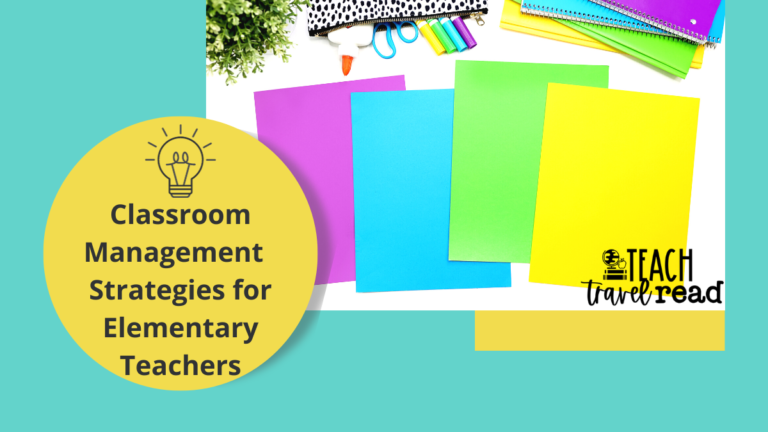
Do you feel like you have a good grasp on classroom management strategies, but keep hitting a wall with your students? Or maybe you are a new teacher and need some tips on classroom management. Are your students well-behaved, but they never stop talking?
This is a topic that many teachers can relate to! Myself included. It can be so frustrating to come up with and implement classroom management plans that sometimes just don’t work. Or they do work, but the students are just a chatty group.
I’ve been there (am there) my friend. My current group of students is great…but man do they love to talk. I am not of the belief that no one should ever talk in a classroom. There is a time and a place for it though.
I spent the first month (or two) of my school year feeling stressed and overwhelmed with the non-stop chatter. So, how did I go from losing my sanity to feeling more calm throughout our day? Grab your favorite beverage and cozy up for my classroom management tips and tricks!
This is the age-old question of how to run a successful classroom for the school year. I think back to my days of student teaching and I’m embarrassed by how little I actually knew. The way I ran my classroom then compared to now was very different. It took me a few years to perfect my classroom management plan. It’s not perfect, but it does help keep me sane.
Classroom management is essential for creating a positive, engaging, and productive learning environment. It is crucial for the following:
In other words, classroom management is the foundation for building a successful school year.
Every teacher has their own ideas and philosophy for managing their classroom and students. If you are a new teacher, speak to your administrators and colleagues about what works best in your school setting. If you’re a veteran teacher, think about what works well and doesn’t with this new generation of students.
Think about the following guidelines when creating your classroom management plan:
✨ Want more details and information? Sign up for my classroom management planning guide. ✨
Are you a new(ish) teacher looking for tips? Or maybe even a veteran that needs some help? Classroom management is a continuous practice we teachers need to improve. Every year is different because of the kids. Here are a few tips to help out those new(ish) teachers!
✨ Want more details and information? Sign up for my classroom management planning guide. ✨
Remember, no one teacher is perfect and has the best classroom management. It is something we all deal with in ebbs and flows. Take the time to reflect and determine your next steps. Don’t forget, you are not alone. Reach out to your colleagues and administrators to help! Every classroom is unique. Feel free to adapt these tips to fit your teaching style and students’ needs.
I’d love to hear your classroom management ideas in the comments!
Love this teaching journey for you.